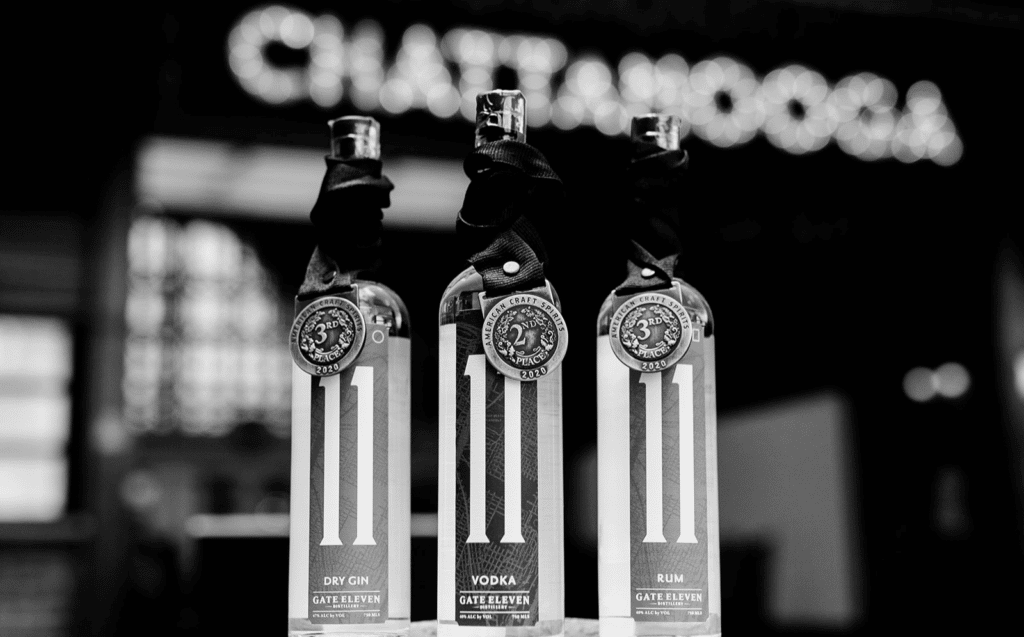In this latest episode, host Freddie Laker speaks with three branding experts on how design impacts the customer experience.

Most of us appreciate good design. It might be a small feature that makes a product more useful, like the four-wheeled suitcase that can travel in any direction. Or, the main benefit might lie in aesthetics, like these beautiful goldfish-shaped tea bags. Design can also relate to quality, environmental friendliness, product lifespan, and innovation.
Now, for the million-dollar question: What impact does design have on end-users’ daily lives?
In a recent episode of the Oh Ship! Show, host Freddie Laker connects with three branding and experience design experts—Matt Cave, Juan-Carlos Morales, and Ryan Hart—to talk about the role of design in business, design systems, and branding and how design strategies impact customer experience.
Before we dive into the nuts and bolts of the power of design, let’s meet our roundtable participants.
Introducing Our Roundtable Panel
First up, we have experienced designer Juan-Carlos Morales. Juan is a former global ECD at PwC as well as SapientNitro, and most recently, he’s been serving Chameleon Collective as a consultant with his extensive experience design know-how.
Next, we have branding expert Matt Cave, who focuses on developing brand identities and creative work.
And then, we have experience strategist Ryan Hart, former lead experience expert at SapientNitro. He’s since gone on to serve as a principal analyst at Forrester and has most recently led PwC’s experience center in Tokyo.
Here’s what we can learn from their firsthand knowledge about the power of design and how design strategies impact the customer experience.
Laker: What is the overall role of design?
Morales starts our discussion with the belief that design can completely transform the way we approach something. He gives the iPhone as a perfect example. “Before the iPhone came along, there was a lot of mobile technology that was very disconnected from each other. No one was really using apps until the iPhone, and it put a new spin on this technology. In this case, and many others, design is the difference between failure and success.”
Cave echoes this idea and raises it one. Working as a branding expert with CPGs, he approaches design as a competitive advantage to help products get noticed in a sea of lookalikes. “Design is ultimately about seducing consumers. It’s about being attractive and standing out. That’s why design is so powerful for consumer-facing brands—it must cater to what the consumer needs, wants, and will use.”
According to Hart, design and experience go hand in hand. “It’s important to realize the experience your customers or end-users are having with your product and build your design around their needs. When you do, you can reduce support costs, drive adoption, and improve customer satisfaction.”
Laker: What does good design look like to you as an end-user?
Morales points out that design thinking is everywhere, from cell phones to swimming goggles. “Swimming goggles have really come a long way. If you swim, you know that all swimming goggles leak. But one company started using AR technology on an iPhone to scan a person’s face and custom-make the eye sockets of the goggles. I’ve tried it—it’s gangbusters. Plus, it’s a really cool way to use AR in a way that isn’t on most companies’ radars.”
Hart also notes that design is powerful in putting ideas and facts into context. For example, Australia developed an app that visually tracks vaccination levels. The app displays a threshold that indicates when the country will reopen based on vaccination statuses. “It is powerful to see these numbers being updated every day on the app and showing people how their vaccinations are helping to make progress toward this threshold.”
Laker: What does the power of design look like from a business standpoint?
Cave likens the power of design for business as building a visual voice. “The brand strategy is broad, and once it’s established, it becomes a matter of visual identity. Say you’re going to a bar or a restaurant or an event. You’re going to package yourself in a way that’s relevant to that crowd, but at the same time, you also want to stand out. A visual voice is similar. You want to stand out, but you also want to be relevant to the type of customer you serve. That takes some careful design to create.”
Morales recalls the days when experience was all about being bold and innovative and unique enough to stand out in the press. But now, thoughtfully designed experiences hinge on familiarity. “When it comes to experience design, building off best practices and adding onto the way other popular platforms do things can retain that familiarity while also allowing you to present something new and different. I think that’s the smartest approach to designing for the customer experience.”
Laker builds on this by noting good design is often about eliminating friction for the end-user. We see evidence of this in our opening four-wheeled suitcase example, which has solved the pain points of countless travelers. With every release of a new iPhone, the same basic interface remains the same. There are usually a few new features, but it’s enough to have to re-learn how to use an iPhone from scratch. “You need a really good reason for doing something novel or interesting because it needs to offset the potential loss of conversion rate if the new design confuses or discourages users.”
However, Hart points out that there’s only so much friction you can eliminate before it doesn’t matter anymore. “You can only make something so easy before it stops adding additional value—to customers and to the organization.” Design is powerful, but it should also have purpose.
This roundtable discussion was so rich in ideas and examples that it was impossible to include every detail. Hear the entire roundtable discussion on Oh Ship! Show Presents: “The Power of Design” Roundtable. Freddie Laker invites you to connect on LinkedIn to share your thoughts and questions on the power of design and its impact on the customer experience. Till next time!




